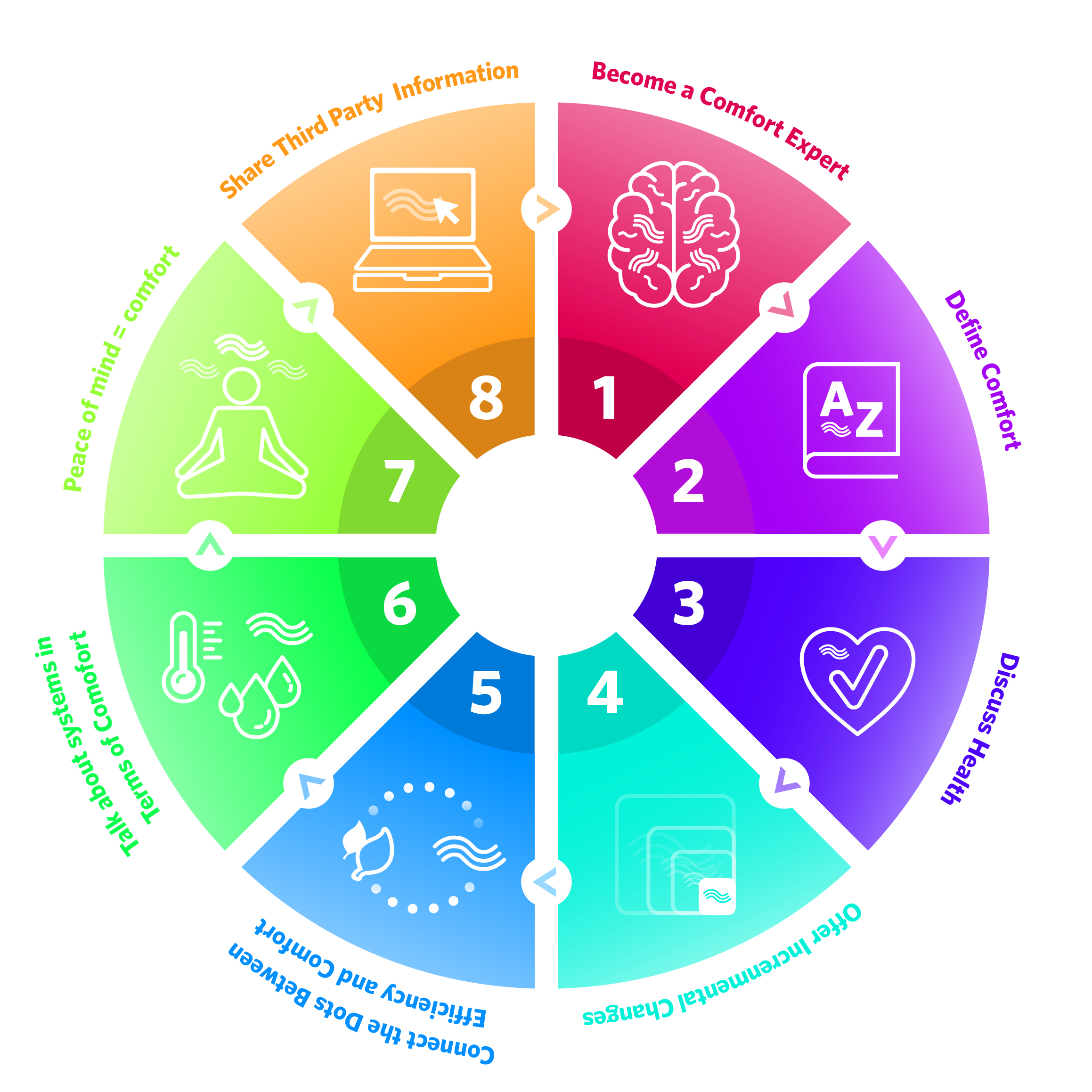Here are Eight Ways to Start a ‘Comfort Conversation’ with your Customers
This post is an excerpt from an article by Becky Hoelscher in Contracting Business. To read the full article and learn more about the importance of homeowner comfort through our survey results, click here.
A recent survey* by Emerson found that nearly 40 percent of homeowners admitted to having family disagreements about comfortable temperature in their home. This presents an opportunity for contractors to start a comfort conversation with homeowners about technology and solutions that can help drive comfort and livability.
8 Ways to Talk Comfort
-
Become a Comfort Expert
Of course, it’s not possible to know everything. The key is knowing enough so you can easily introduce comfort into HVAC conversations and educate your customers on the role HVAC plays in comfort and livability. The goal is for your customers to see you as their comfort expert.
-
Define Comfort
Sometimes the easiest way to define something is by describing what it isn’t. Ask your customers if they have temperature swings on humid days between cycles, cold spots in the home or office, or trouble sleeping in the summer. By getting them to talk about issues they have, it’s easier to define what comfort is and what it means to them.
-
Discuss Health
While health can be a delicate topic, it is an important and personal one when it comes to comfort. For most customers, it is probably enough just to help them understand that the air quality in their home can affect their family’s health or worsen a pre-existing condition. Looking around the room to see if there are tissues placed in the open also demonstrates allergies in the family and that air quality can be an important topic. Talking about health issues provides an easy transition to introducing the concept of indoor air quality.
Most people have a strong personal desire to be comfortable. They may not pay extra for a five percent energy efficiency increase, but they might pay more for air that does not agitate their child’s asthma.
-
Offer Incremental Changes
This one is a bit of a psychological approach. Big changes or purchases are often, by default, perceived as expensive, intimidating or overwhelming. Smaller, incremental changes, which deliver on low-hanging fruit or provide a manageable road map for achieving a larger goal, can be viewed as more approachable, doable and affordable.
-
Connect the Dots Between Efficiency and Comfort
Explain that you don’t need to choose between energy efficiency and comfort. A balanced approach is possible. Many of the advanced systems and technologies that deliver energy savings also provide better comfort and indoor air quality. Temperature consistency, energy efficiency, and humidity control are all aspects of systems that deliver higher comfort.
Innovative technologies like Copeland Scroll modulating compressors, advanced building controls, and Wi-Fi thermostats can help bring both comfort and efficiency to homeowners.
-
Talk About Systems in Terms of Comfort
When explaining the differences between systems, for example, focus on the comfort factors – humidity control, temperature consistency, better air circulation – rather than just cost or system performance differences. A customer might not care about what industry terms like variable speed or SEER mean, but they will want to hear about lowered humidity and how they won’t sweat or freeze at night.
-
Peace of Mind = Comfort
A correctly installed system operating at peak performance is what homeowners ultimately need for total comfort. Talk to customers about ways they can have peace of mind that their system will keep their family comfortable, now and in the future. Think beyond traditional service agreements to technology like the Sensi Predict that can help monitor systems, provide regular performance reports, meet customer needs and equip contractors to provide quick, accurate service.
-
Share Third-Party Info
Bolster your message with information from third party unbiased sources. AC & Heating Connect is a good resource for homeowners and contractors. OEM and trade association sites, like NATE, ACCA and AHRI are other great resources as well.
There’s no better time than now to have the discussion. Think about the next engagement you will have with your customers and decide the best way to introduce the concept of comfort with them. Innovative technologies like Copeland Scroll modulating compressors, advanced building controls, and Wi-Fi thermostats can help bring both comfort and efficiency to homeowners.
*Emerson surveyed 298 U.S. consumers via Survey Monkey in October 2018.

